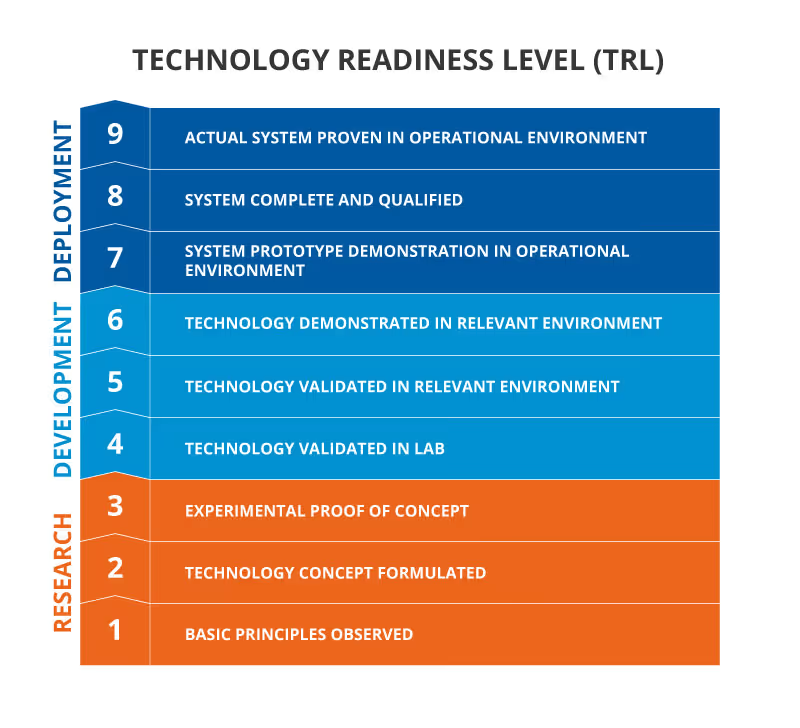What We Do
Location
123 Business Street, Suite 456
New York, NY 10001, USA
Contact us


In the cleantech and climatetech sectors, bringing an innovative idea to market involves more than just a working prototype—it requires a strategic approach to commercialization that accounts for regulatory challenges, scalability, and sustainable growth. Many founders in these industries reach a pivotal point during Technology Readiness Levels (TRL) 6-9, where they must transition from research and pilot testing to full-scale production and market entry. Unlike traditional tech markets, cleantech commercialization often demands extensive testing, infrastructure investment, and an in-depth understanding of the regulatory landscape to ensure that solutions are viable and compliant.
This guide provides cleantech and climatetech founders with essential commercialization strategies to navigate these hurdles successfully. From scaling operations and securing customers to crafting go-to-market plans, each section offers actionable insights to help founders move their innovations from the lab to mainstream adoption. By understanding the distinct phases of commercialization and leveraging the right resources and partnerships, cleantech entrepreneurs can build impactful, market-ready solutions that contribute to a more sustainable future.
The path from innovative cleantech concept to market-ready solution is filled with unique challenges, often more daunting than in other industries. Cleantech and climatetech founders face distinct barriers, such as complex regulatory landscapes, high capital needs, and the need to prove scalability in real-world conditions. Unlike consumer tech, where new ideas can be tested quickly and iterated, cleantech innovations often demand pilot tests, infrastructure, and substantial upfront investment.
However, with the right commercialization strategy, cleantech and climatetech founders can overcome these hurdles. This guide covers key steps, from moving beyond initial testing phases to entering markets and scaling sustainably.

The Technology Readiness Level (TRL) scale measures the development phase of a technology, from early-stage research to full commercial readiness. For cleantech founders, TRLs 6 through 9 mark the transition from lab-based research to market-ready solutions.
Reaching TRL 9 in cleantech means achieving more than technical feasibility. It demands scalability, reliability, and cost-efficiency—qualities that go beyond laboratory success. Founders must ensure that their solutions can handle real-world variability, which often involves working closely with partners to conduct rigorous field trials.
Founders can take the following steps to move from TRL6 to TRL9 effectively:
While piloting proves the technology in a controlled environment, scaling involves making it broadly applicable. This leap requires establishing production capacity, ensuring supply chain readiness, and setting up distribution channels.
Infrastructure plays a critical role in cleantech commercialization. Key considerations include:
Strategic partnerships are a powerful way to scale cleantech businesses by sharing both costs and risks. Founders can work with:
Polar Beer Taps, a climatetech startup specializing in eco-friendly beer tap systems, aimed to reduce waste and energy consumption for bars and restaurants. Their innovative system offered a sustainable way to regulate beer temperatures with minimal environmental impact. Yet, while their technology had proven successful in pilot projects, scaling production for commercial readiness presented significant challenges.
ClimateDoor, a venture capital firm focused on sustainable technologies, recognized the potential of Polar Beer Taps and stepped in to accelerate their commercialization journey. ClimateDoor not only invested significant capital but also connected Polar Beer Taps with an established manufacturing partner in British Columbia. This partnership provided critical support in scaling machinery production, allowing Polar Beer Taps to rapidly expand its manufacturing capabilities without sacrificing quality or sustainability.
Thanks to ClimateDoor’s involvement, Polar Beer Taps was able to:
This strategic collaboration enabled Polar Beer Taps to expand their market footprint and transition from pilot projects to a viable commercial product, ready for widespread adoption across North America’s hospitality industry. The case of Polar Beer Taps highlights how cleantech founders can benefit from both financial support and the right partnerships to scale responsibly and effectively.
The cleantech sector spans various industries, from energy and water to agriculture. Founders should prioritize markets with high growth potential and compatibility with their technology.
Cleantech companies often face complex regulatory requirements. Understanding local and regional laws, emission regulations, and energy standards is critical. Founders may also find incentives or grants that can boost initial growth.
Acquiring customers in cleantech, whether B2B or B2G (business-to-government), requires unique approaches:
Pricing cleantech products can be challenging. Founders need to cover costs while making products attractive for early adopters. Some effective approaches include:
Transitioning customers from pilot projects to long-term partnerships involves:
Securing investment is vital for scaling. Cleantech founders can explore options like venture capital, private equity, and government grants. Notable sources include:
A strong go-to-market (GTM) strategy can position a cleantech company for rapid growth. Key components include:
Tracking progress is essential for understanding whether commercialization strategies are working. KPIs to consider include:
Cleantech businesses must prioritize sustainability, not just in products but in business models. Key considerations:
Commercializing cleantech solutions is a complex but achievable journey. With the right strategies—bridging from TRL6-9, scaling infrastructure, navigating markets, and securing investment—founders can transform ideas into impactful, market-ready solutions.
The cleantech sector demands adaptability and resilience. Founders who focus on sustainable growth, continuously iterate on feedback, and prioritize strong partnerships can build businesses that not only achieve market success but also contribute meaningfully to a cleaner, greener future.
Q1: What is TRL6-9 in cleantech, and why is it important?TRL6-9 refers to the stages in the Technology Readiness Level scale where innovations are moved from lab-based research to real-world, market-ready solutions. These levels are crucial in cleantech as they involve proving scalability, manufacturability, and durability.
Q2: How can cleantech companies scale their production effectively?Effective scaling requires strong infrastructure, reliable supply chains, and strategic partnerships. Cleantech companies can often benefit from collaborating with established manufacturers and distributors.
Q3: What are the best ways to enter the cleantech market?Founders should identify markets with high growth potential and clear regulatory frameworks. B2B and B2G strategies work well in cleantech, especially when targeting companies or governments focused on sustainability.
Q4: How can cleantech startups secure funding?Cleantech startups can explore venture capital, government grants, and strategic investments from companies interested in sustainable solutions. Many investors seek both financial returns and environmental impact.
Q5: What are the key success metrics for cleantech commercialization?Important KPIs include revenue growth, market penetration, and customer retention. These metrics indicate product-market fit, customer satisfaction, and scalability.
Q6: Why is sustainability important in the cleantech business model?Sustainability aligns with the mission of cleantech companies and builds customer trust. Incorporating green supply chains, product durability, and circular economy principles supports long-term growth and brand reputation.